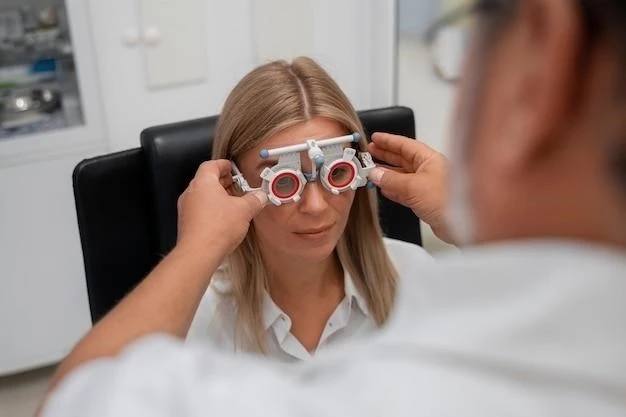Macular Corneal Dystrophy
Macular corneal dystrophy is a rare eye disease characterized by progressive corneal opacities leading to vision loss. This article will delve into the causes, genetic mutation, symptoms, diagnosis, treatment options, impact on corneal tissue, visual impairment, corneal collagen changes, and future research in managing this condition.
Introduction to Macular Corneal Dystrophy

Macular corneal dystrophy is a rare form of corneal dystrophy that affects the transparent front part of the eye. It is a genetic disorder characterized by the buildup of abnormal material in the cornea, leading to cloudiness and loss of vision over time. This condition primarily affects the corneal stroma, impacting the corneal collagen fibers.
Individuals with macular corneal dystrophy often experience a gradual decline in vision as the cornea becomes increasingly opaque. The condition can manifest in both eyes and typically becomes more severe with age. While rare, macular corneal dystrophy can significantly impair an individual’s quality of life due to the associated visual disturbances.
Understanding the underlying causes, genetic mutations, and progression of macular corneal dystrophy is crucial for effective diagnosis and management of the condition. By exploring the molecular mechanisms contributing to corneal opacities and vision loss in this disease, researchers can develop targeted treatment strategies to alleviate symptoms and potentially halt disease progression.
Causes and Genetic Mutation
Macular corneal dystrophy is primarily caused by genetic mutations that affect the production and organization of corneal collagen, a vital component of the cornea’s structure. Mutations in the CHST6 gene have been identified as the primary genetic cause of this condition. These mutations disrupt the normal sulfation process of the corneal stroma, leading to the abnormal deposition of glycosaminoglycans.
The abnormal accumulation of glycosaminoglycans in the cornea results in the formation of corneal opacities, which progressively impair vision. The inheritance pattern of macular corneal dystrophy is usually autosomal recessive, meaning that an individual must inherit a copy of the mutated gene from each parent to develop the disease.
Research into the specific genetic mutations associated with macular corneal dystrophy is ongoing, with the aim of elucidating the underlying mechanisms that contribute to corneal clouding and vision loss. By identifying the precise genetic alterations responsible for the condition, scientists can develop targeted therapies that address the molecular defects driving disease progression.
Symptoms and Progression
Individuals with macular corneal dystrophy may experience a range of symptoms that reflect the progressive nature of the disease. One of the hallmark signs is the development of corneal opacities, which cause the cornea to appear cloudy or hazy. This cloudiness can lead to blurry or distorted vision, making it challenging to see objects clearly.
As macular corneal dystrophy advances, the corneal opacities may increase in size and number, further compromising visual acuity. Patients may also notice increased sensitivity to light, glare, and fluctuations in vision quality. In some cases, individuals with this condition may develop recurrent corneal erosions, leading to episodes of eye discomfort and pain.
The progression of macular corneal dystrophy varies from person to person but generally follows a gradual course. Vision loss tends to worsen over time as the corneal opacities become more pervasive. Regular eye examinations are essential for monitoring changes in vision and assessing the impact of the disease on corneal health.
Diagnosis and Detection
Diagnosing macular corneal dystrophy typically involves a comprehensive eye examination conducted by an ophthalmologist or optometrist. The evaluation may include tests to assess visual acuity, examine the cornea for opacities, and evaluate the overall health of the eye. Additionally, specialized imaging techniques such as corneal topography and optical coherence tomography (OCT) can provide detailed insights into corneal structure and thickness.
A critical aspect of diagnosing macular corneal dystrophy is genetic testing to identify mutations in the CHST6 gene. Genetic analysis can confirm the presence of specific genetic alterations associated with the condition, helping to differentiate it from other forms of corneal dystrophy. Family history evaluation may also be conducted to determine the inheritance pattern of the disease within the patient’s relatives.
Early detection of macular corneal dystrophy is essential for initiating appropriate management strategies and monitoring disease progression effectively. By combining clinical assessments with genetic testing, healthcare providers can make an accurate diagnosis, provide genetic counseling to affected individuals and their families, and tailor treatment plans to address the unique characteristics of this rare genetic disorder.
Treatment Options
Managing macular corneal dystrophy focuses on addressing the symptoms and complications associated with the condition, as there is currently no cure for the underlying genetic mutation. Treatment options aim to improve visual function, reduce discomfort, and slow the progression of corneal opacities.
Patients with macular corneal dystrophy may benefit from corrective lenses or glasses to enhance visual acuity and reduce glare. In some cases, contact lenses or scleral lenses can provide better visual correction by masking corneal irregularities caused by opacities. Lubricating eye drops or ointments may also be prescribed to alleviate dryness and discomfort.
In advanced stages of the disease where vision loss is significant, a corneal transplant surgery may be recommended. During a corneal transplant, the cloudy central portion of the cornea is replaced with healthy donor tissue to improve clarity and vision. However, the success of the transplant and long-term outcomes can vary among individuals.
Regular follow-up appointments with eye care professionals are essential to monitor the progression of macular corneal dystrophy and adjust treatment strategies as needed. By actively managing the symptoms and complications of the disease, individuals with macular corneal dystrophy can optimize their visual quality of life and preserve eye health to the best extent possible.
Corneal Transplant Surgery
Corneal transplant surgery, also known as keratoplasty, is a surgical procedure commonly recommended for individuals with advanced macular corneal dystrophy who experience severe vision loss due to corneal opacities. During the surgery, the cloudy or scarred central portion of the cornea is replaced with clear donor corneal tissue obtained from a deceased donor.
There are different types of corneal transplant procedures, including penetrating keratoplasty (PK) and endothelial keratoplasty (EK), such as Descemet’s stripping automated endothelial keratoplasty (DSAEK) and Descemet’s membrane endothelial keratoplasty (DMEK). The specific type of transplant recommended depends on the extent and location of corneal involvement in macular corneal dystrophy.
Corneal transplant surgery aims to improve visual acuity, reduce corneal opacities, and enhance overall vision quality in individuals affected by macular corneal dystrophy. While the procedure can lead to significant visual improvements, there are risks of complications such as graft rejection, infection, or refractive errors that need to be carefully monitored post-operatively.
Close follow-up care with an ophthalmologist is crucial after corneal transplant surgery to assess the success of the procedure, monitor healing progress, and address any issues that may arise. By undergoing corneal transplant surgery as a treatment option for macular corneal dystrophy, individuals can potentially regain clearer vision and improve their quality of life.
Impact on Corneal Tissue
Macular corneal dystrophy has a profound impact on the structure and composition of the corneal tissue, specifically the corneal stroma. The abnormal deposition of glycosaminoglycans in the stroma leads to the formation of corneal opacities, which interfere with the transmission of light through the cornea, resulting in cloudy vision and visual impairment.
Over time, the corneal opacities associated with macular corneal dystrophy can increase in size and number, further compromising the transparency of the cornea. This clouding effect progressively impairs visual acuity and can significantly affect an individual’s ability to perform daily tasks that require clear vision, such as reading or driving.
The impact of macular corneal dystrophy on corneal tissue may also extend to increased sensitivity to light, glare, and difficulty with night vision. These symptoms contribute to the overall visual disturbances experienced by individuals with the condition, highlighting the importance of early detection and appropriate management strategies to preserve corneal health and visual function.
Visual Impairment and Cloudy Vision
Visual impairment and cloudy vision are hallmark features of macular corneal dystrophy, impacting the overall quality of vision in affected individuals. The presence of corneal opacities, caused by the abnormal accumulation of glycosaminoglycans in the corneal stroma, leads to a reduction in visual acuity and clarity.
Individuals with macular corneal dystrophy often experience progressive deterioration in vision as the corneal opacities worsen over time. The cloudiness of the cornea interferes with the normal passage of light into the eye, resulting in blurred or distorted vision that cannot be adequately corrected with glasses or contact lenses alone.
Cloudy vision in macular corneal dystrophy can significantly impact daily activities, such as reading, driving, or recognizing faces. The visual impairment associated with the condition may also lead to difficulties adapting to changes in lighting conditions, such as sensitivity to bright light or glare, further compromising visual function.
Managing visual impairment and cloudy vision in macular corneal dystrophy requires a comprehensive approach, including regular eye examinations, vision correction strategies, and potentially surgical interventions like corneal transplant surgery. By addressing the underlying causes of visual disturbances, individuals with macular corneal dystrophy can work towards optimizing their visual quality of life.
Corneal Collagen and Opacities
In macular corneal dystrophy, abnormalities in corneal collagen play a central role in the development of corneal opacities. Corneal collagen, the primary structural protein in the cornea, provides transparency and strength to the tissue. Mutations in the CHST6 gene disrupt the sulfation process of corneal stromal glycosaminoglycans, leading to the abnormal accumulation of these compounds within the cornea.
The deposition of glycosaminoglycans in the corneal stroma results in the formation of opacities, which scatter and block the passage of light through the cornea. As a consequence, the cornea loses its clarity and transparency, causing visual disturbances such as blurry vision and reduced visual acuity. The density and distribution of corneal opacities can vary among individuals with macular corneal dystrophy, impacting the severity of visual impairment.
Understanding the relationship between corneal collagen abnormalities and the development of opacities is crucial for diagnosing and managing macular corneal dystrophy effectively. Research into novel treatment approaches targeting the mechanisms of collagen deposition and opacity formation may offer promising avenues for improving visual outcomes and quality of life for individuals affected by this rare corneal disorder.
Future Research and Management Strategies
Future research in macular corneal dystrophy aims to advance our understanding of the genetic mutations and molecular pathways underlying the disease, with the goal of developing innovative management strategies and potential therapeutics. By investigating the specific mechanisms driving corneal collagen abnormalities and opacities, researchers can identify targets for intervention to slow or halt disease progression.
Novel treatment approaches for macular corneal dystrophy may involve gene therapy, regenerative medicine techniques, or targeted pharmaceutical interventions to address the root cause of the condition at a molecular level. Emerging technologies such as CRISPR-Cas9 gene editing hold promise for correcting genetic mutations associated with the disease, offering potential avenues for personalized therapeutic interventions.
Additionally, continued research into corneal tissue engineering and biomaterials may lead to the development of artificial corneal substitutes that mimic the transparency and structural integrity of natural corneal tissue. Such advancements could revolutionize the field of corneal transplantation and provide innovative solutions for individuals with macular corneal dystrophy who require surgical intervention.
Collaboration between clinicians, researchers, and industry partners is essential for driving progress in the understanding and management of macular corneal dystrophy. By combining expertise in genetics, ophthalmology, and bioengineering, the scientific community can work towards improving outcomes for patients affected by this rare corneal disorder, ultimately enhancing quality of life and visual function for individuals with macular corneal dystrophy.
